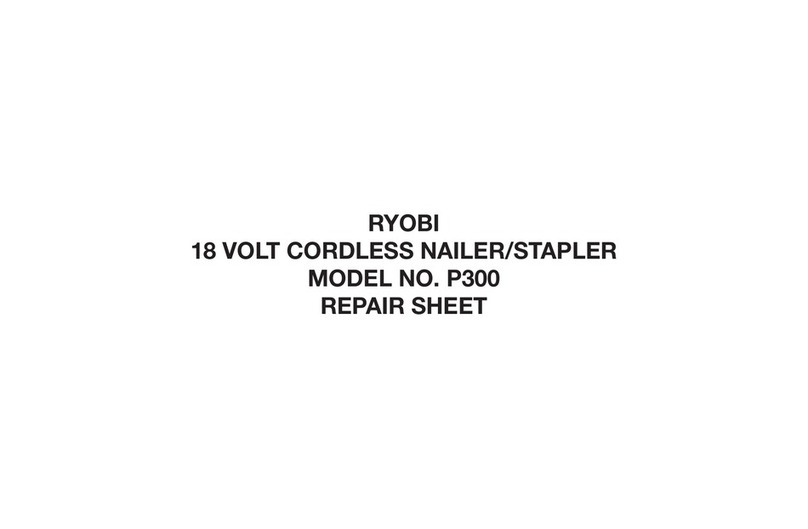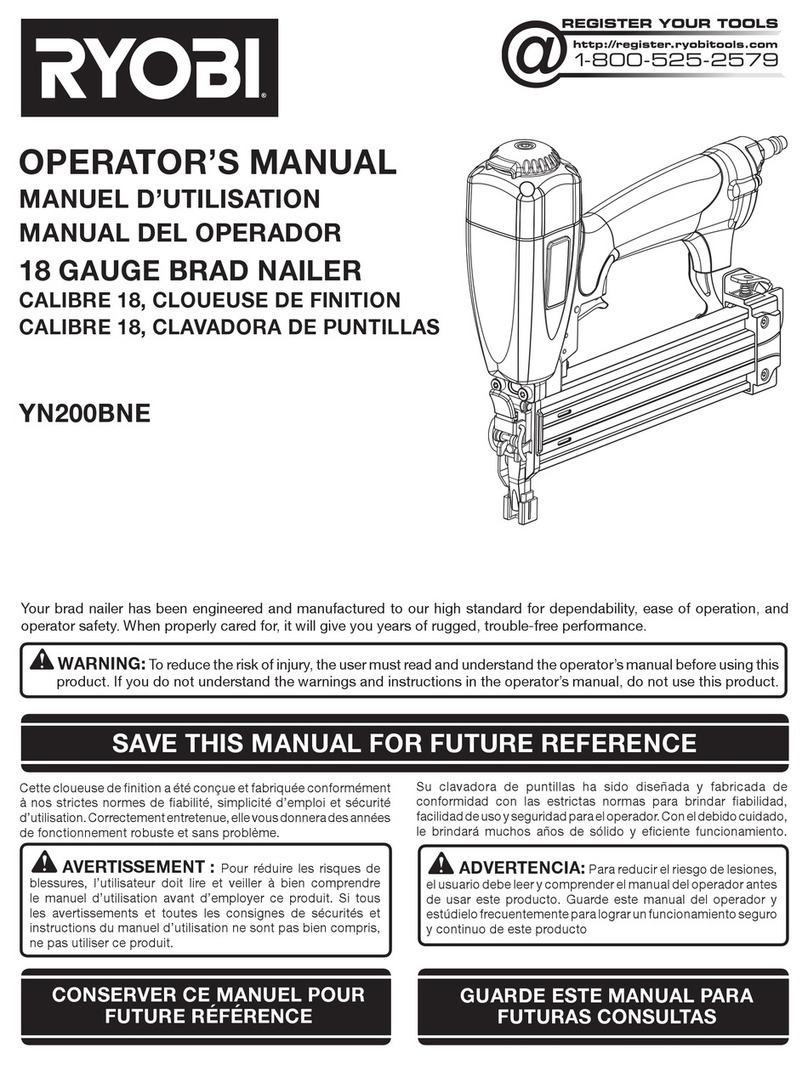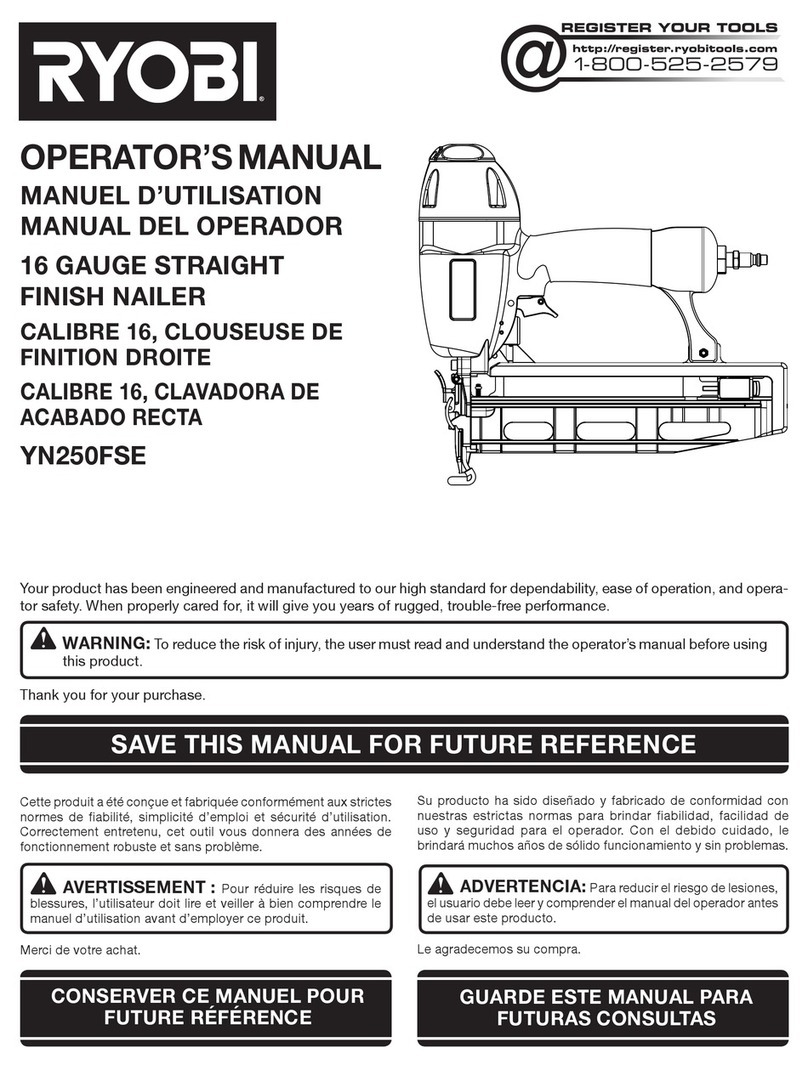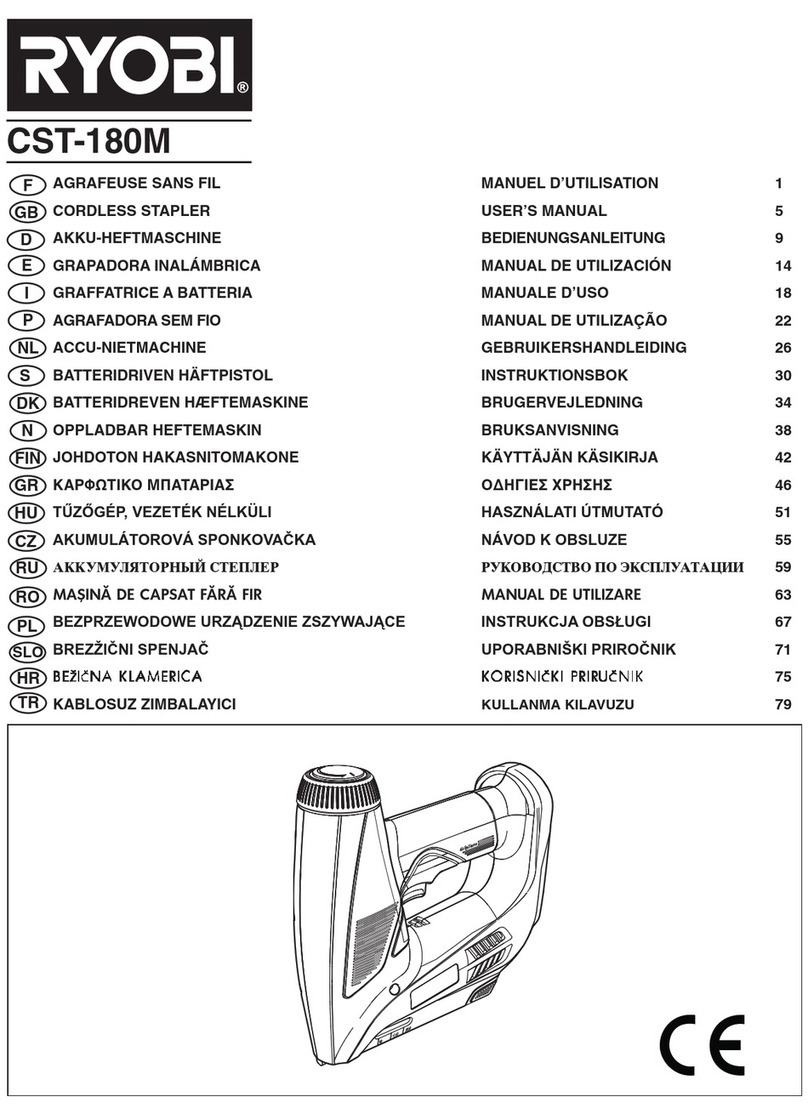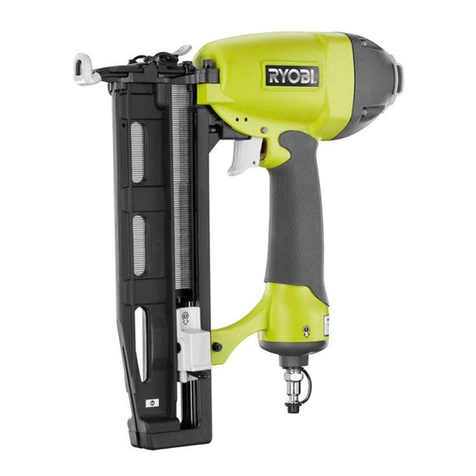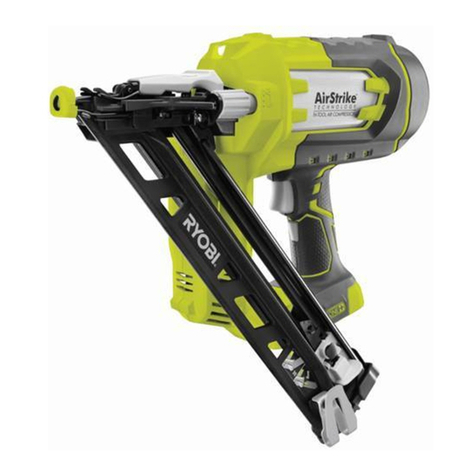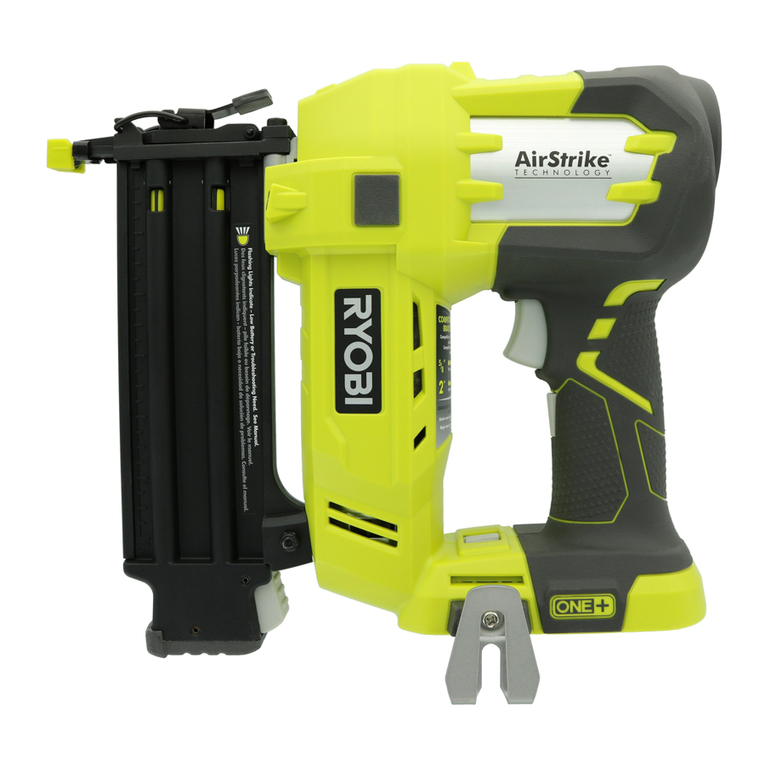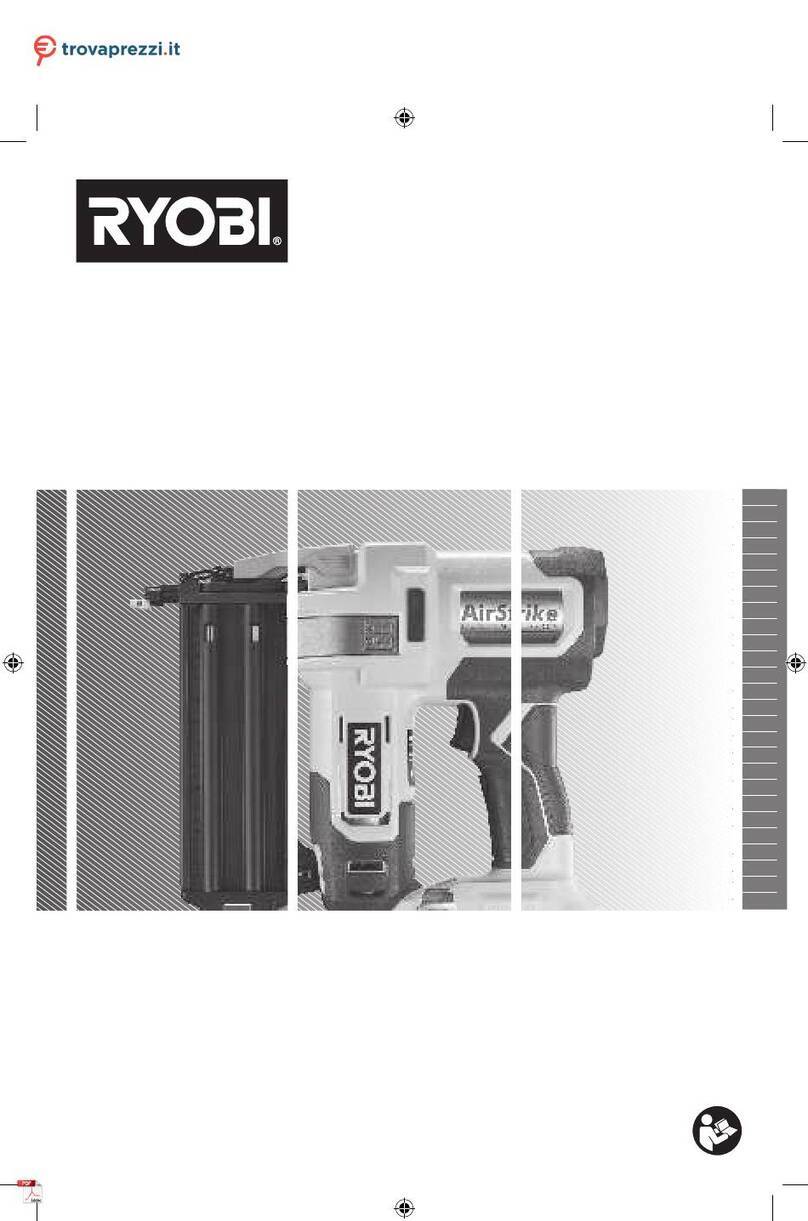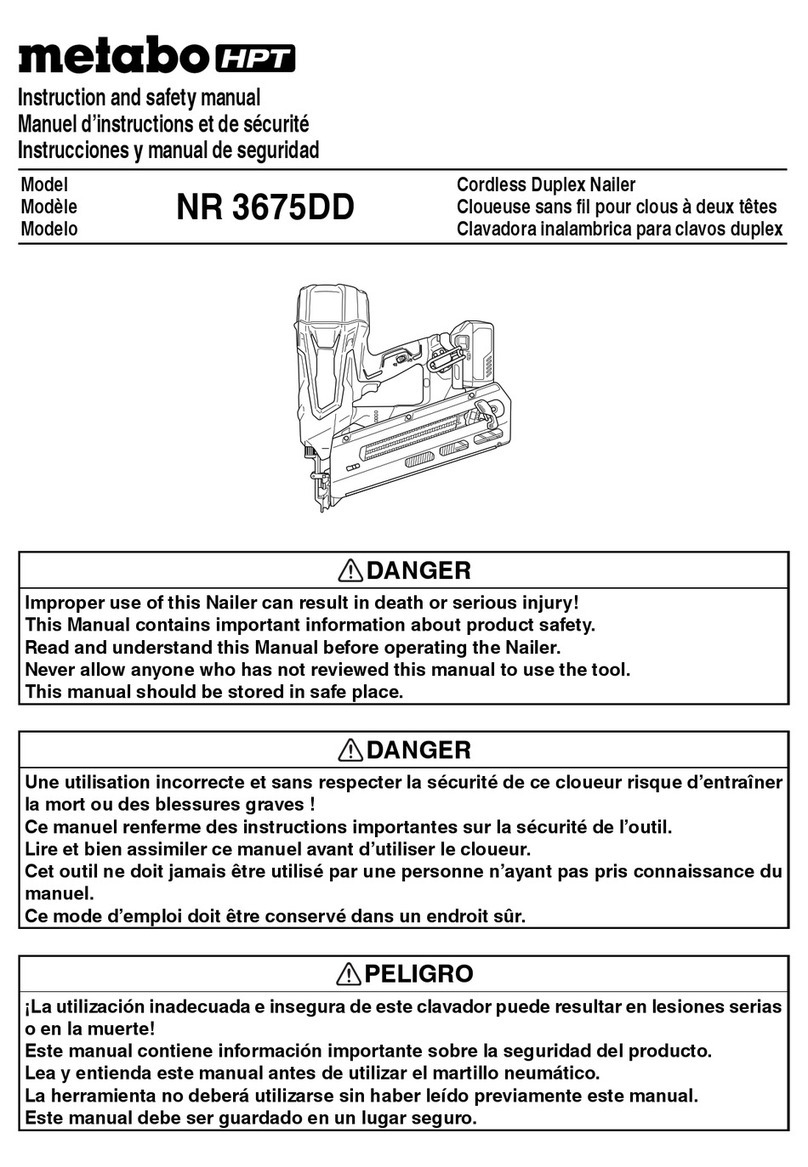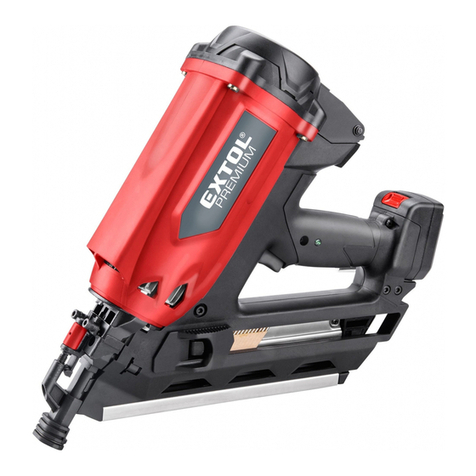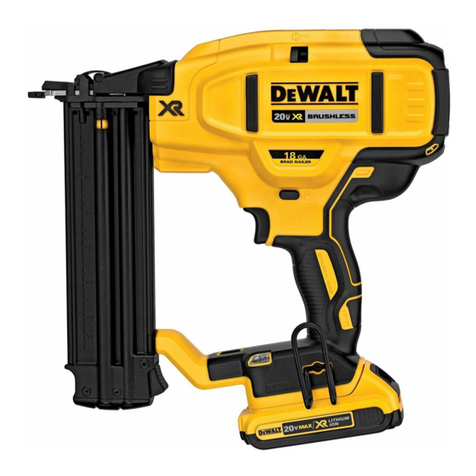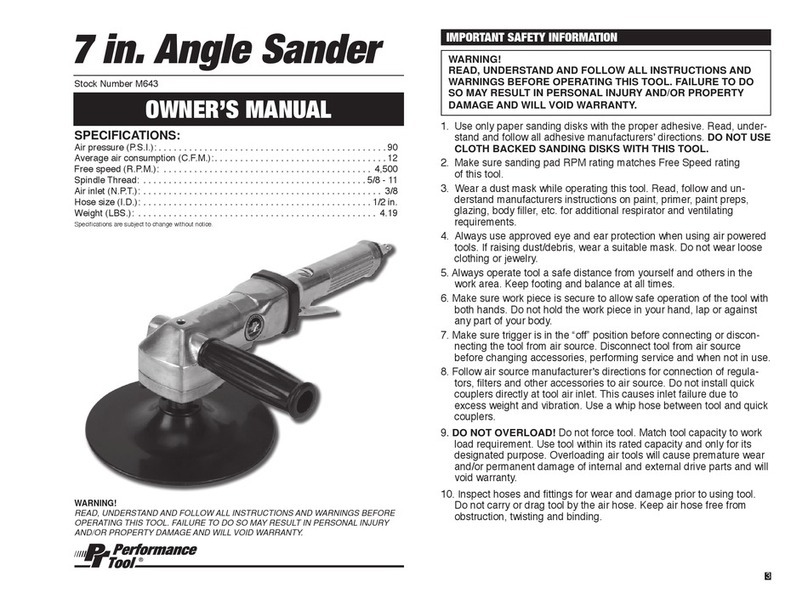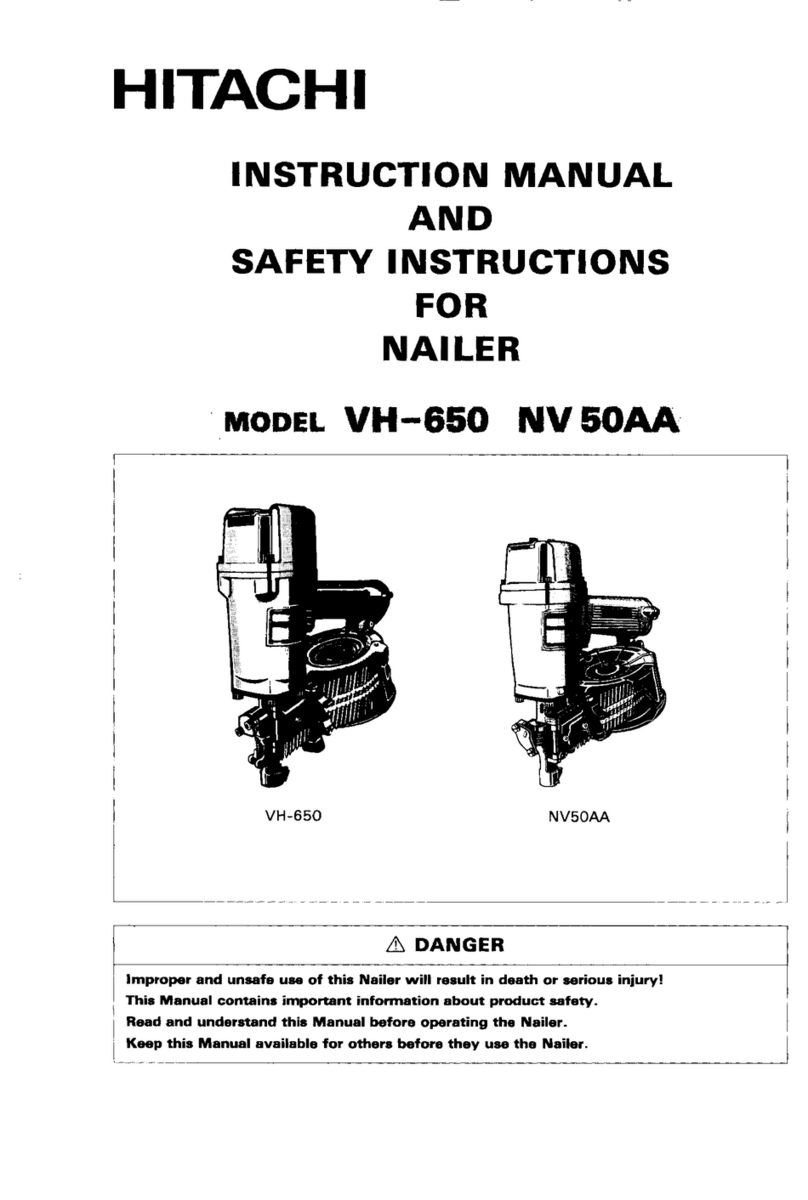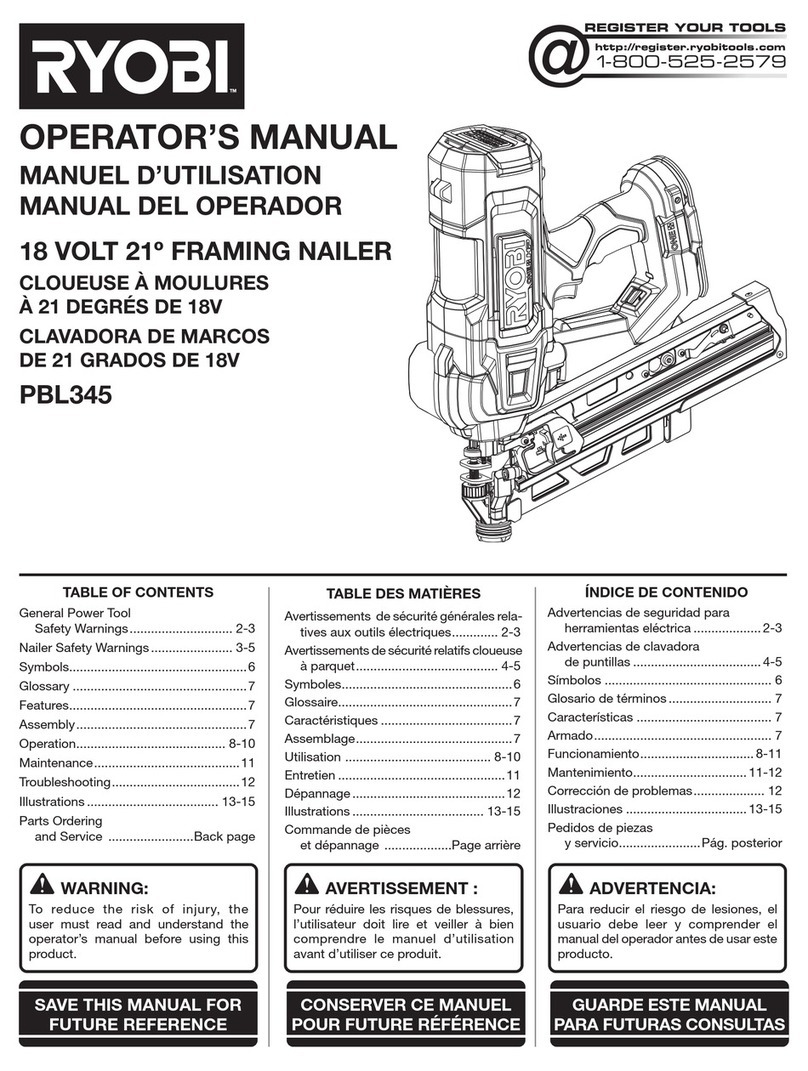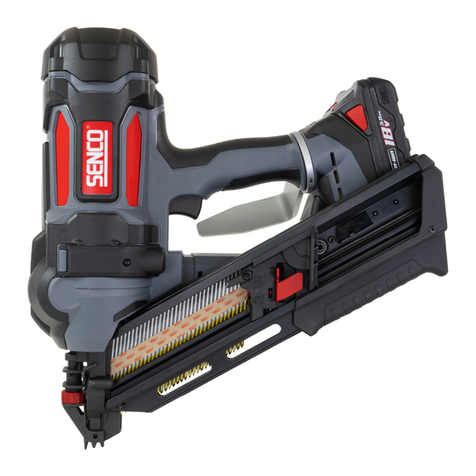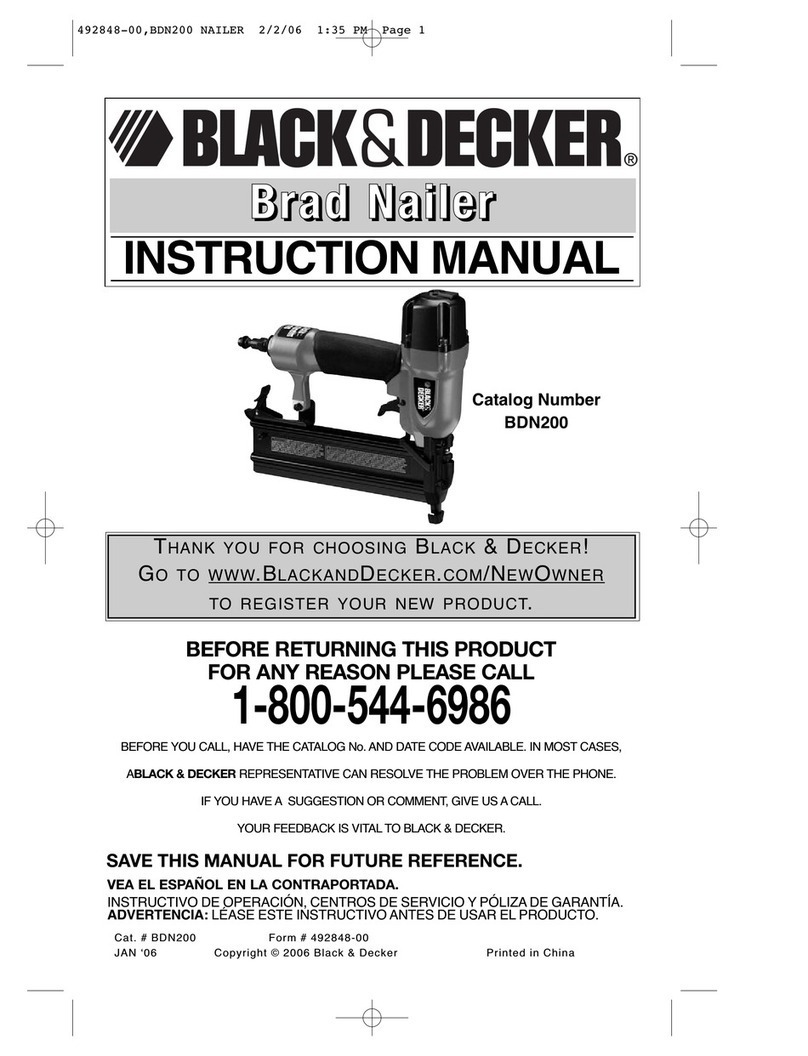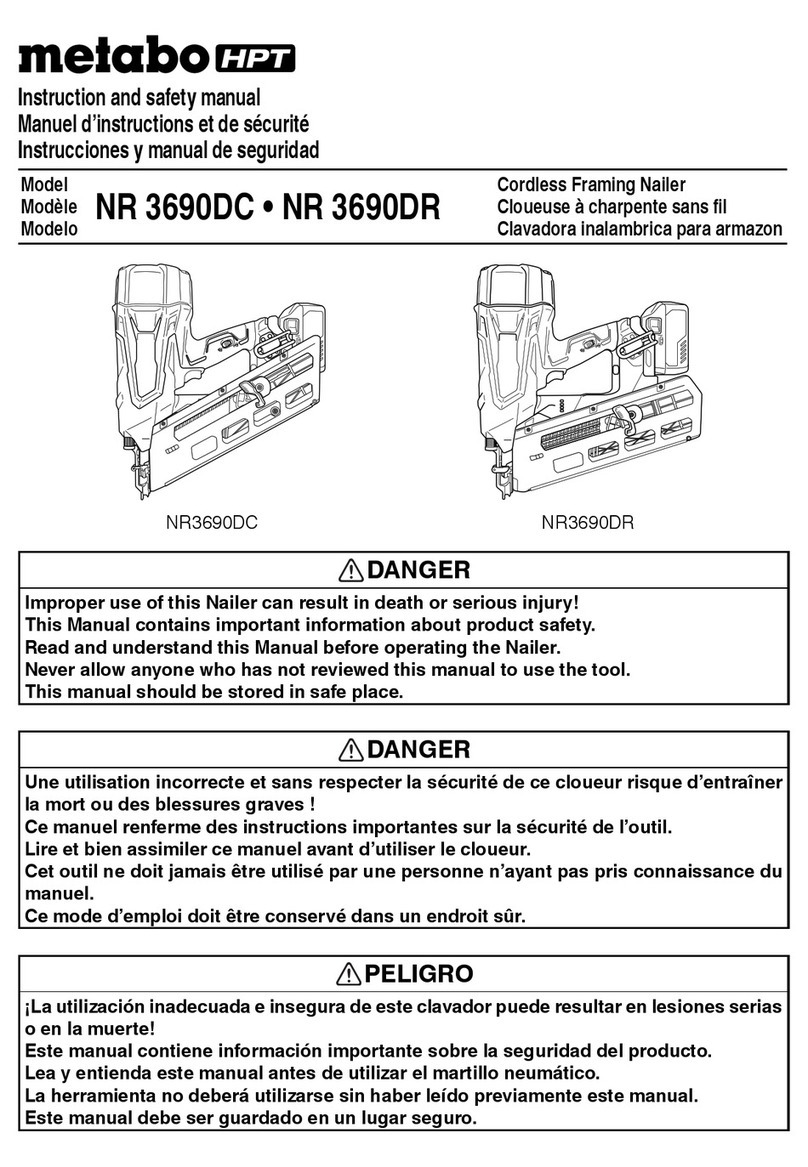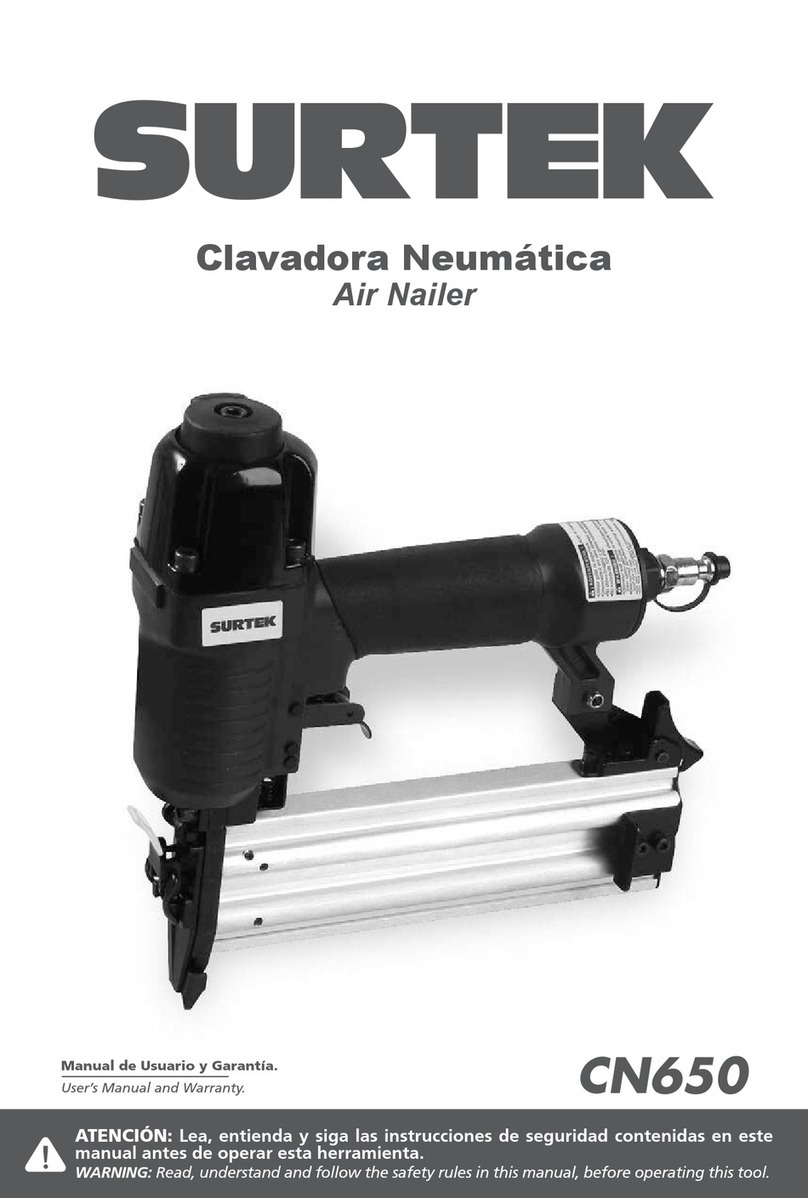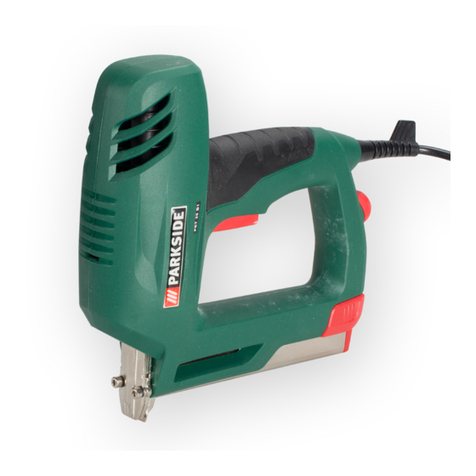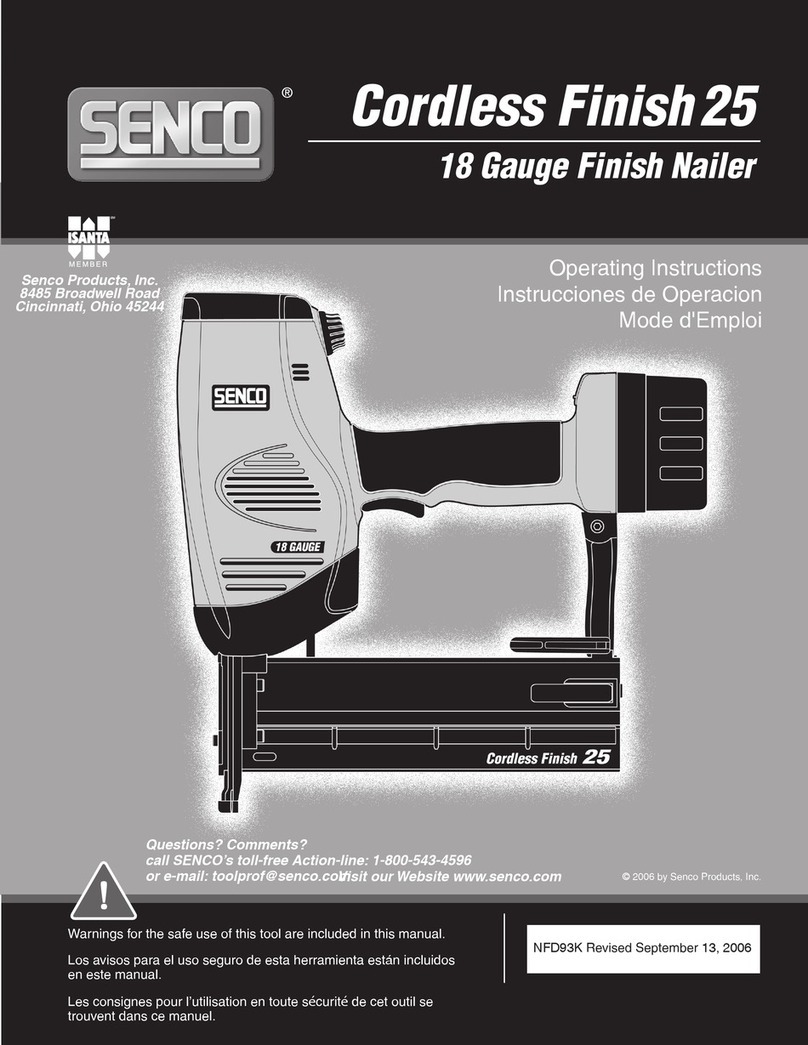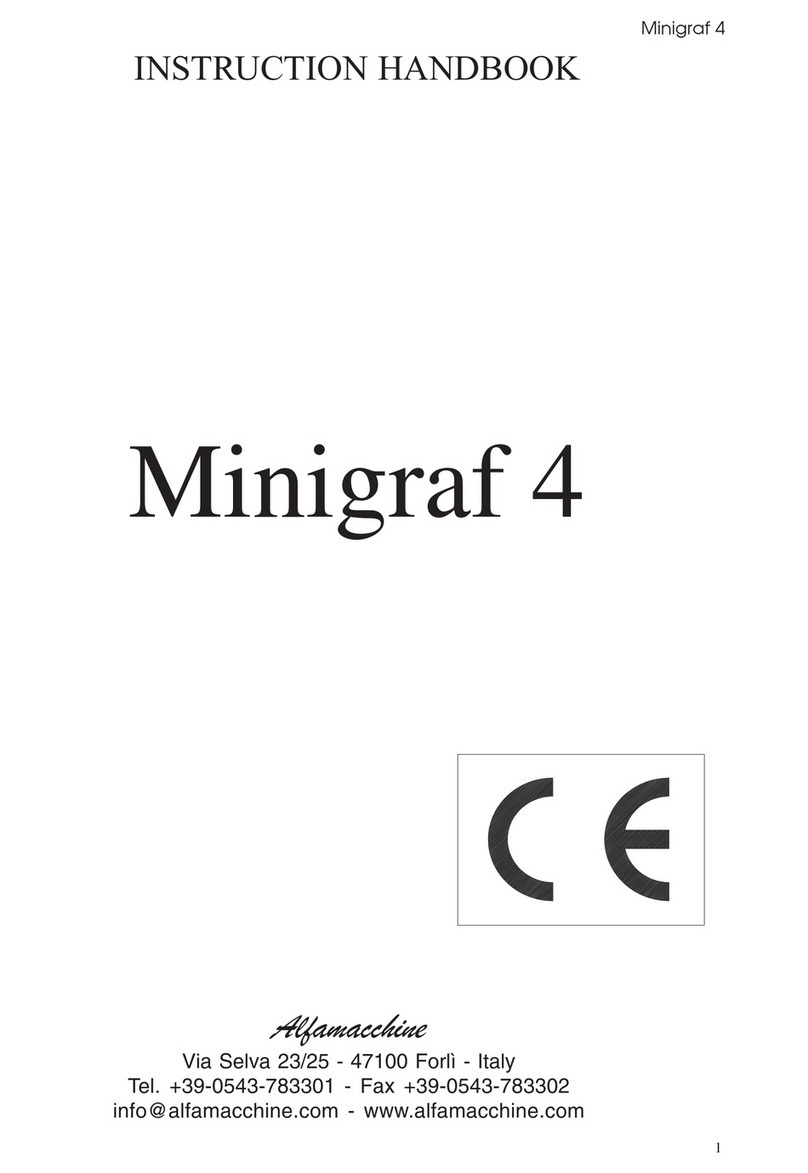Deutsch
6
WARNUNG
Lesen Sie alle Warnungen und Anweisungen!
Die Nichtbeachtung der Sicherheitshinweise und der
Anweisungen kann zu Stromschlag, Feuer und/oder
schweren Verletzungen führen.
Bewahren Sie alle Warnhinweise und Anleitungen zum
späteren Nachschlagen auf.
NAGLER SICHERHEITSWARNUNGEN
a) Gehen Sie immer davon aus, dass das Werkzeug
mit Nägel gefüllt ist. Unvorsichtige Handhabung des
Naglers kann zu unerwartetem Abfeuern von Nägeln
führen und Sie verletzen.
b) Richten sie das Werkzeug nicht auf sich selbst oder
andere Personen in der Nähe. Unerwartetes Auslösen
schießt Nägel heraus und verursacht Verletzungen.
c) Betätigen Sie das Werkzeug nicht, bevor es fest
auf das Werkstück gesetzt ist. Wenn das Werkzeug
keinen Kontakt mit dem Werkstück hat, kann der Nagel
von der Befestigungsstelle abprallen.
d) Trennen Sie das Werkzeug von der
Stromversorgung, wenn ein Nagel in dem Werkzeug
verklemmt ist. Wenn der Nagler angeschlossen ist,
kann es beim Entfernen eines fest sitzenden Nagels
versehentlich betätigt werden.
e) Seien Sie vorsichtig, wenn Sie einen verklemmten
Nagel entfernen. Der Mechanismus kann unter
Druck stehen und der Nagel kraftvoll ausgestoßen
werden während Sie versuchen eine Verklemmung zu
beseitigen.
f) Benutzen Sie diesen Nagler nicht um elektrische
Kabel zu befestigen. Es ist nicht geeignet für die
Installation von elektrischen Kabeln und kann die
Isolierung der elektrischen Kabel beschädigen, und so
Gefahr von Stromschlag oder Feuer verursachen.
ZUSÄTZLICHE SICHERHEITSWARNUNGEN
a) Seien Sie sich immer bewusst, dass Missbrauch
und falsche Handhabung dieses Werkzeugs zu
Verletzungen von Ihnen und anderen Personen führen
kann.
b) Das Werkzeug ist zur Benutzung mit einer Hand
entworfen worden. Halten Sie das Werkzeug nicht an
der Vorderseite des Magazins. Platzieren Sie nicht
Ihre Hände, Ihren Kopf oder andere Körperteile in die
Nähe der Magazinunterseite, wo die Nägel aus dem
Werkzeug austreten, weil sonst schwere Verletzungen
entstehen können.
c) Stellen Sie immer sicher, dass die Mündung vollständig
über dem Werkstück ist. Wenn die Mündung nur
teilweise über dem Werkstück platziert ist, kann der
Nagel das Werkstück vollständig verfehlen und zu
schweren Verletzungen führen.
d) Schießen Sie keine Nägel an der Materialkante ein. Das
Werkstück kann sich spalten und der Nagel abprallen,
und Sie oder einen anderen Arbeiter verletzen. Seien
Sie sich bewusst, dass der Nagel der Holzmaserung
folgen kann und dadurch unversehens aus der Seite
des Arbeitsmaterials heraustreten oder umgelenkt
werden, und Verletzungen verursachen kann.
e) Halten Sie Hände und Körperteile von dem
unmittelbaren Arbeitsbereich fern. Halen Sie das
Werkstück, wenn nötig mit Klemmen fest, um Hände
und Körper aus dem Gefahrenbereich zu halten. Stellen
Sie sicher, dass das Werkstück gesichert ist, bevor Sie
den Nagler gegen das Material drücken. Kontakt mit
dem Werkstück kann zu unerwarteter Bewegung des
Arbeitsmaterials führen.
f) Halten Sie Gesicht und Körperteile von der Rückseite
des Werkzeugs fern, wenn Sie in enger Umgebung
arbeiten. Plötzlicher Rückschlag kann zu einem Schlag
auf den Körper führen, besonders beim Nageln in
hartem oder dichtem Material
g) Bei normaler Benutzung schlägt das Werkzeug sofort
nach dem Einschießen eines Nagels zurück. Das ist
eine normale Funktion des Werkzeugs. Versuchen sie
nicht den Rückschlag zu verhindern, indem Sie den
Nagler gegen das Werkstück halten. Einschränkung des
Rückschlags kann dazu führen, dass ein zweiter Nagel
eingeschossen wird. Halten Sie den Griff fest, lassen
Sie das Werkzeug die Arbeit machen und platzieren
Sie Ihre zweite Hand niemals auf das Werkzeug oder
in die Nähe der Mündung. Die Nichtbeachtung dieser
Warnung kann zu schweren Verletzungen führen.
h) Schießen Sie keinen Nagel auf einen anderen Nagel
ein, oder mit dem Werkzeug in einem übermäßig
steilen Winkel, weil dadurch Nägel abgelenkt werden
und Verletzungen verursachen können.
i) Überprüfen Sie immer den Arbeitsbereich auf versteckte
Verkabelung, Gasleitungen, Wasserleitungen usw.,
bevor Sie das Produkt in dem Arbeitsbereich benutzen.
j) Schalten Sie das Produkt zurück auf Einzelauslösung,
nachdem Sie es mit Kontaktauslösung benutzt haben.
k) Die Einschlagtiefe des Nagels kann über den Luftdruck
hinaus eingestellt werden. Es ist ratsam die Tiefe auf
einem Abfallstück zu testen, um die erforderliche Tiefe
für die Anwendung zu ermitteln.
l) Nur Nägel die der Beschreibung in der
Produktspezifikation entsprechen können mit
diesem Werkzeug benutzt werden. Benutzung der
falschen Nägel kann zu Verklemmen oder anderen
Fehlfunktionen führen.
SICHERHEITSWARNUNGEN TIEFENANSCHLAGEIN-
STELLUNG
a) Entfernen Sie immer den Akku, bevor Sie das Stellrad
zur Tiefenanschlageinstellung einstellen.
b) Ziehen Sie nicht an dem Einstellrad, das Rad ist zum
Drehen bestimmt.
